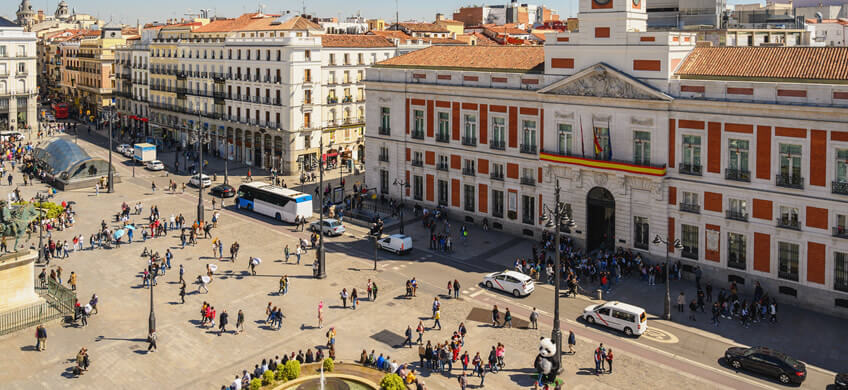
The Madrid 360 Environmental Sustainability Strategy replaces the previous Madrid Central to meet European Union air quality targets, which, if not met, would lead to penalties on the city. But what changes does this mean for residents? What measures will be taken? We explain what the most important areas are and how Madrid 360 is different to Madrid Central.
Madrid 360 has been designed by Madrid City Council to reduce emissions by three times more than under Madrid Central. Various measures are being put in place to do so:
The A-5 is the biggest source of pollution in the city. The solution that has been decided is to place the 8 lanes of the motorway underground between Avenida de Poblados (km7500) and Avendia de Portugal (km3700).This will free up an area of over 90,00 square metres where the construction of a green space is under consideration.
BUS-VAO lanes will be established on the roads leading into Madrid. This measure will require joint management with the Ministry of Development and the Community of Madrid. The aim is to end pollution on the A-42 whose Elíptica square monitoring station records one of the worst air quality levels.
Parking fees will be lower and more spaces will be made available to non-residents. Electric cars will park for free. Cars displaying the “ECO” label will have a 50% discount, whilst class C vehicles will have a 10% discount. The number of parking spaces for motorbikes will be doubled. The Madrid 360 plan also envisages the creation of a short-stay Regulated Parking Service (SER) in which vehicles can only park in the centre for shorter periods of time than under the Sustainable Mobility Ordinance.
In addition to the lengths of stay, it has still to be decided where these parking areas will be set up, their opening hours, and the type of vehicles that will be affected by the regulation. Signage must also be created to identify them so that residents are able to recognise the parking areas.
The plan also includes extending the SER to neighbourhoods outside the M30, which would bring to an end the current Neighbourhood Parking Areas (ZAV).
Motorbikes are less polluting than cars. Accordingly, the 360 plan will double the number of designated parking places for these vehicles. This is also influenced by the fact that there are increasing numbers of cleaner electric motorbikes.City centre access times for motorbikes displaying B and C labels will also be extended to 10pm and extending it to midnight in the future is also under consideration.
To meet WHO Low Emission Zone regulations, the plan aims to apply the same rules to traders as to residents in the affected areas. This means they will be able to access more easily the areas where they have their businesses as well as driving and parking there, which will simplify their operations.
The removal of some bike lanes is being considered. However the City Council is planning to extend BiciMAD both inside and outside the M30, which would include the possible creation of new lanes.
Class C vehicles (petrol vehicles from 2006 onwards and diesel vehicles from 2014 onwards) with two occupants or more can travel freely in the high emissions zones as they are considered “high-occupancy vehicles”. Previously, they were only able to enter the central area if they were going to park.
Private vehicles are responsible for most of the nitrogen oxide emissions in the centre of Madrid. But not all vehicles produce the same emissions so traffic will be regulated according to the environmental labels they carry. Madrid 360 envisions applying new phased measures on the following timescale:

As you can see, there are no big differences between the two plans. We can summarise the changes brought in by Madrid 360 in the following points:
In short, Madrid 360 places fewer restrictions on vehicles. However, it covers a much greater area of the city and it is expected that environmentally damaging emissions will be reduced in compliance with European Union demands.